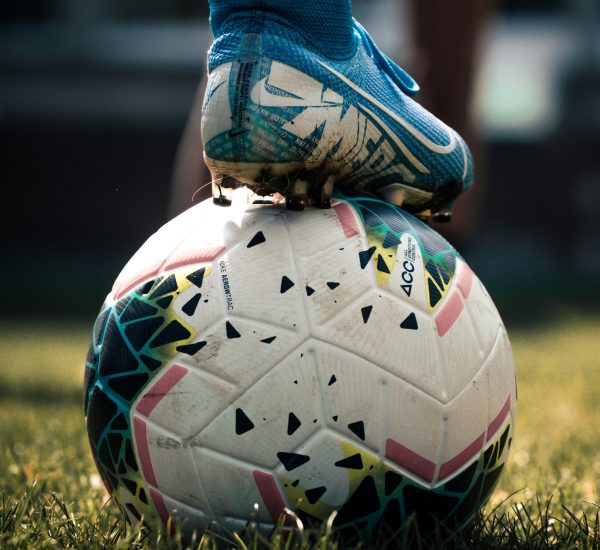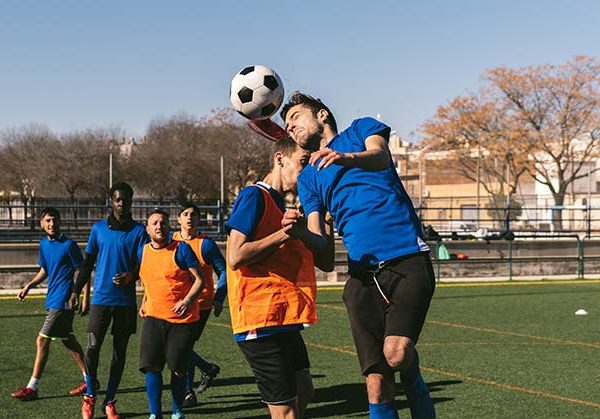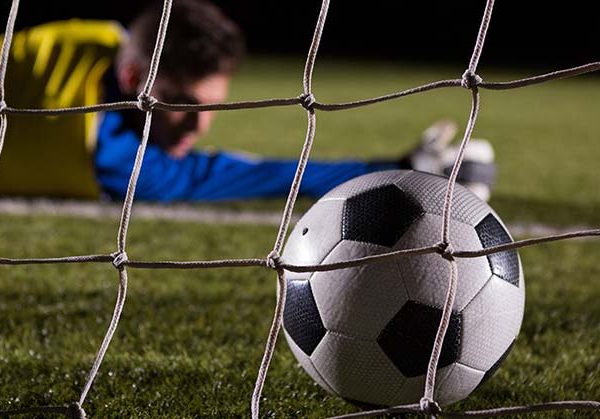Soccer rules can be confusing for people new to the sport. Knowing the rules will help anyone better understand the soccer game.
The soccer rules are governed by IFAB (International Football Association Board). These rules have been created to ensure fair competition among soccer teams. Some examples of soccer rules are the goal kick, corner kick, throw-in, and free-kick.
Many different rules are followed to make the game fair and enjoyable for everyone involved. This article will list some of the essential soccer rules that govern the game.
IFAB (International Football Association Board)
The IFAB (International Football Association Board) is the organization that sets the soccer rules. It was founded in 1886 and is made up of the four national governing bodies for soccer in the United Kingdom: The English Football Association, the Scottish Football Association, the Welsh Football Association, and the Northern Irish Football Association. FIFA, the international governing body for soccer, is an observer member of The IFAB.
The primary purpose of The IFAB is to make sure that the soccer rules are consistent around the world. In addition to setting the rules, The IFAB also provides guidance and support to national associations on best running their leagues and tournaments.
One of The IFAB’s most important responsibilities is to update soccer rules as needed. It is done in response to changes in technology or how the game is being played.
The IFAB governs 17 rules. They are:
- The field of play
- The ball
- The players
- The player’s equipment
- The referee
- The other match officials
- The duration of the match
- The start and restart of play
- The ball in and out of play
- Determining the outcome of a match
- Offside
- Fouls and misconduct
- Free-kicks
- The penalty kick
- The throw-in
- The goal kick
- The corner kick
Let us have a look at each of the different soccer rules.
The Field of Play
In soccer, the field of play is rectangular, and its length is 90-120 meters long, and its width is 45-90 meters wide. The field has a white boundary line on each side and a goal at each end. Near each sideline is a touchline, and near each goal is a six-meter-wide penalty area.
A semicircular arc centered on the intersection of the goal line and the penalty area line marks the spot from which penalties are taken. The field also has two other lines: The halfway line divides the field’s length in two, while the center circle (or “D”) located in the middle of the halfway line defines the center of the playing area.
The Ball
A ball is a round, inflated ball used in soccer. It is generally made of leather or synthetic material and is about 27 to 28 inches in circumference. The ball has two panels attached to opposite sides and a bladder filled with air inside. The balls are often brightly colored and decorated with team logos.
The first balls were made of inflated animal skins, which were impractical due to their weight and size. Then, in 1848, Charles Goodyear created the first rubber ball, which was much lighter and easier to handle. Today’s balls are mostly made of synthetic materials like PVC or rubber, durable, and can withstand high-pressure levels.
The Players
A soccer match is played between two teams of 11 players, one of which is the goalkeeper. These 11 players are allowed to be substituted throughout the game.
The referee is the only person who can substitute a player, and this can only happen when the ball is out of play. Substitutions can be made for any reason, but usually, they are made because a player is injured or tired.
In addition, substitutions are essential to keep players fresh and allow for different players to have a chance to play. Therefore, substitutions are also regulated, with teams being allowed to make up to 3 substitutions per game. This number can vary if the game goes in extra time.
Substitutes are used to replace injured players, give other players a break, or change the team’s strategy.
The Player’s Equipment
In soccer, players are only allowed to use their feet, head, and torso to touch the ball. They are not allowed to use their hands or arms.
Shin pads are also required equipment for players. They help protect players from getting hurt if they kick or get kicked by the ball. Soccer cleats are also necessary. They are different than regular shoes because they have cleats on the bottom, which help players grip the ground better when they run.
Goalkeepers have a lot of specialized equipment to help with their job. For example, they typically wear different colors than the other players on the field to make them easily visible.
Goalkeepers also wear gloves to protect their hands. They use a large glove called a goalkeeper mitt to catch balls shot at them. This glove has a webbing between the thumb and fingers that helps them catch the ball. Goalkeepers also use padded pants and chest protectors to protect their bodies from collisions with other players.
The Referee
Referees in soccer play a critical role in the game. They are responsible for maintaining order on the field, making calls, and ensuring that the game is played in a just manner. As a result, referees have a whistle that they use to direct the match,
The linesman and the fourth officials support the referee during the game. Nowadays, Video Assistant Referee (VAR) is used in soccer to ensure the game is fair.
Referees must have a good understanding of the game’s rules and be able to make quick decisions. They also need to maintain control of the players and keep them from getting out of hand.
Referees can be crucial to the outcome of a match, and their decisions can often mean the difference between victory and defeat. They will often book players for offenses using either a yellow or a red card.
The Other Match Officials
In addition to the referee, other match officials in soccer play a significant role in the game. These officials are the assistant referees and the fourth official.
The assistant referees help the referee monitor player behavior and ensure that the game’s rules are followed. They also assist with making calls on offsides and corner kicks.
The fourth official is responsible for overseeing substitutions and keeping track of time. They also deal with disciplinary issues that may arise during the match.
The Duration of the Match
Soccer is a sport that is often played for 90 minutes. The game is split into two halves of 45 mins each.
The duration of a soccer match can vary based on the competition being played. For example, the soccer match is played beyond 90 mins if the game is tied during finals. The extra time consists of two halves of 15 mins each. If the game is still tied after the extra time, the winner is determined by a penalty shootout.
The Start and Restart of Play
When starting a soccer game, both teams line up in opposite halves of the field. Then, the ball is placed in the middle of the ground, and play begins once the referee blows the whistle.
Teams can score by kicking or heading the ball into the other team’s goal. The team that scores the most goals by the end of the game wins.
In soccer, a dropped ball is used to restart the game after a stoppage. For example, if play is stopped inside the penalty area, the ball is dropped on the penalty mark.
If the game is halted outside the penalty area, the ball is dropped at the point where it happened.
The Ball In and Out of Play
There are many different rules governing the soccer game. Among these is the law, which dictates when a ball is considered out of play. This rule can be confusing for some players, as there are several instances in which the ball may be regarded as out of bounds.
To help clarify this rule, here is a breakdown of when a ball is considered out of bounds in soccer.
The first instance in which a ball is considered out of bounds is when it completely leaves the field of play. It can happen either through an intentional kick by one team or a deflection off another player or object.
If the ball goes out of bounds on the sidelines, the opposing team will get to throw in the ball from that spot. Play will stop and restart with a throw-in from where the ball went out if it goes out of bounds into the stands.
Determining the Outcome of a Match
Goal in Soccer
A goal is scored when the ball crosses the goal line entirely and into the goal. It can happen in several different ways.
A goal is scored when a player kicks or heads the ball into the goal. Another instance is when the ball is deflected off another player into the goal.
There are instances where a goal may not be counted. An example is when a goal is scored after the referee has blown his whistle to stop play.
Winning Team in Soccer
The match between two soccer teams is always a competition to see the better team. But, who is the actual winner of the game? The team that scores the most goals during the match is declared the winner. If there is a tie, the game goes into overtime or penalty kicks to determine a winner.
Offside
Offside in soccer can be a bit confusing. There are a lot of rules that go into the offside, and it’s not always easy to know when you’re offside or not. So we’re going to break down the basics of offside in soccer and help make it a little easier to understand.
First, let’s start with what precisely offside is. Offside is when a player is in front of the ball and closer to the opposing team’s goal than the second-to-last opponent. If you’re standing near the sideline and the ball is on the other side of the field, you’re not considered offside.
There are a few things that can happen when someone is deemed offside.
Learn about offside in soccer in this article.
Fouls and Misconduct
There are several types of fouls in soccer. The most common is the tripping foul when a player trips another player with their foot or leg. Such fouls often occur purposefully or by accident. Another type of foul is the charging foul when a player runs into another player. It can also happen on purpose or by accident.
There are also offensive and defensive fouls. An offensive foul is when a player does something that prevents the other team from scoring, such as holding or pushing an opponent. A defensive foul is when a player commits some infraction to stop the other team from scoring, such as tackling an opponent from behind.
There are also several types of misconduct in soccer. The most common one is dissent when a player argues with an official about their call.
Free-kicks
There are several types of free-kicks in soccer. The most common is the direct free-kick. It involves kicking the ball directly into the opponent’s goal.
The indirect free-kick is less common and involves another player touching the ball before a goal attempt.
The Penalty Kick
In soccer, the penalty kick is a crucial offensive strategy. When players are fouled in their opponent’s penalty area, they are awarded a penalty kick. It is an opportunity for the team to score without using the penalty spot.
The player taking the penalty is positioned 12 yards from the goal. If successful, the kicker and their teammates rejoice; if not, they may be left disappointed and frustrated.
The penalty kick can be an effective way to score, but it is also risky. The goalkeeper can stop the ball if they guess correctly where the kicker will place it.
Additionally, if the ball goes off-target or is saved by the goalkeeper, the attacking team may lose possession of the ball and allow their opponents to counterattack.
The Throw-in
A throw-in is usually awarded to a team when the ball goes out of bounds on the sidelines. The player who last touched the ball before it went out of bounds is awarded the throw-in. The player must then stand with both feet on or behind the touchline and throw the ball into play.
Learn everything about throw-in in soccer in this article
The Goal Kick
The goal kick is an integral part of the soccer game. It is used to restart the game after the ball has gone out of play. The goalkeeper is responsible for continuing the game following a goal-kick.
The goalkeeper will kick the ball from inside the penalty area and be sent in any direction.
Learn about goal kick in soccer by reading this article.
The Corner Kick
There are many soccer rules, but one of the most important is the rule about corner kicks. A corner kick is a type of free kick taken from the corner of the field.
When players take a corner kick, they must first ensure that all of their players are behind the ball.
They then take a short run-up and kick the ball into the other team’s goal.
It counts as a goal if the ball goes into the goal, just like any other goal.
If the ball doesn’t go into the goal, it becomes a live ball and can be played by either team.
End of Line
In conclusion, soccer is an incredibly complex and exciting sport that has captured people’s hearts all over the world. Whether you are a beginner or an experienced player, there is always something to learn about the game. So get out there and start kicking some balls!



